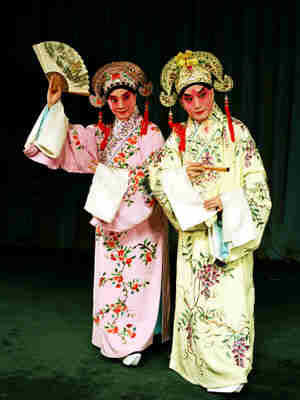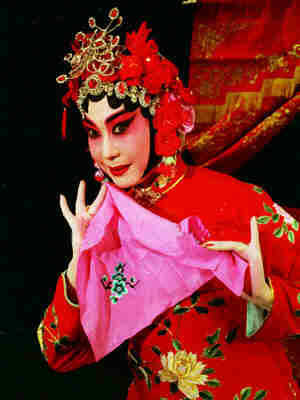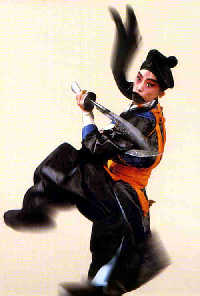
Fan skills are body techniques. The fan used on the stage is a special property used to express many kinds of meanings and situations. All roles, especially including the xiao sheng and hua dan, use the fan.

Handkerchief skills are also body techniques originating from a song-and-dance duet popular in Northeast China and developed from Jiqu Opera. Traditionally, the handkerchief had either four or eight corners. It can be waved and turned inside out, shaken, held up, kicked, thrown, or propped up with a finger. In the past few years other kinds of handkerchiefs have appeared on the opera stage.

Beard skills are body techniques too. The actor can manipulate his beard in many ways -- including pushing, pulling, holding up, spreading, tearing, throwing, shaking, circling, and blowing -- to express a variety of feelings. Some of these actions are done at the same time. All these techniques are required to match the dance movements in order to correctly express the feelings of the character.
Cap wing skills involve manipulating the wings of the gauze cap. With the neck as the axis, the actor moves the wings of the cap up and down, twirls them, or moves them to the left or right, or from the front to the back. Sometimes, he makes just one of the wings move. The actor makes them move or stop moving to indicate contradictory feelings, hesitation, or sudden joy, and so on.
Hair swinging skills are techniques for a male role. Swinging the hair is a special movement to express the abnormal feelings of the character or other situation the character is in, such as fear, sadness, hatred, running away, or agony or peacefulness amidst death throes. The techniques include swinging, circling, twisting, and spreading over the face or up in the air.
